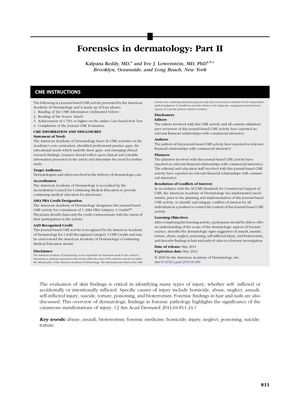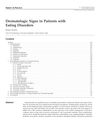Forensics in Dermatology: Part II
April 2011
in “
Journal of The American Academy of Dermatology
”

TLDR Dermatologists play a key role in identifying and documenting signs of abuse and injury for forensic investigations.
The document "Forensics in dermatology: Part II" from May 2011 reviewed the critical role of dermatologic evaluation in forensic investigations, focusing on identifying injuries from various causes such as abuse, neglect, torture, and bioterrorism. It emphasized recognizing specific injury patterns, such as gunshot wounds, bite marks, and burns, to differentiate between accidental and intentional harm. The document also covered forensic findings in hair and nails, highlighting their importance in providing retrospective information about exposures or ingestions. Dermatologists were advised to be vigilant for signs of physical and sexual abuse, especially in vulnerable populations, and to consider mimickers of abuse in their differential diagnosis. The document underscored the necessity of thorough documentation and timely forensic examination in suspected abuse cases and the importance of collaboration between law enforcement, scientists, and physicians.
